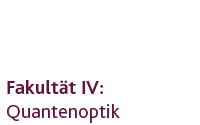Experimental Quantum Optics Chair
Welcome to the Experimental Quantum Optics Chair of Prof. Dr. Ch. Wunderlich at the University of Siegen.
Our experimental and theoretical work concentrates on the development and exploration of new schemes for quantum information processing using individual atoms and open fundamental questions related to quantum physics.
News
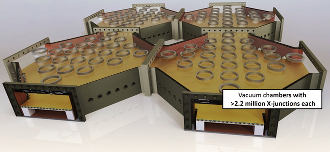
A Quantum Computer Blueprint
02/01/2017
A large scale quantum computer is best constructed using a modular approach. Joining with researchers from the University of Sussex (UK), Google (USA), Aarhus University (Denmark) and RIKEN (Japan), we present the blueprint for an ion trap based scalable quantum computer module which makes it possible to create an arbitrarily large quantum computer architecture powered by long-wavelength radiation. This quantum computer module controls all operations as a stand-alone unit, is constructed using silicon microfabrication techniques and within reach of current technology. To perform the required quantum computations, the module makes use of long-wavelength-radiation quantum gate technology and relies only on a vacuum environment and global laser and microwave fields. Scaling this microwave quantum computer architecture beyond one module can be done by connecting arbitrarily many identical modules for a large scale architecture.
- Blueprint for a microwave trapped ion quantum computer, B. Lekitsch et al.,Science Advances 3 (2017)
- Interview with Prof. Dr. Chr. Wunderlich
- Media coverage by Nature, BBC, Financial Times
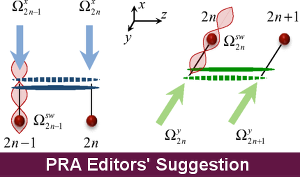
Analog Quantum Simulation of a QED with Trapped Ions
09/16/2016
The prospect of quantum-simulating lattice gauge theories opens exciting possibilities for understanding fundamental forms of matter. Together with colleagues from the University of Innsbruck (Austria), we show that trapped ions represent a promising platform in this context when simultaneously exploiting internal pseudospins and external phonon vibrations. We illustrate our ideas with two complementary proposals for simulating lattice-regularized quantum electrodynamics (QED) in (1+1) space-time dimensions. Both schemes work on energy scales significantly larger than typical decoherence rates in experiments, thus enabling the investigation of phenomena such as string breaking, Coleman's quantum phase transition, and false-vacuum decay. The underlying ideas of the proposed analog simulation schemes may also be adapted to other platforms, such as superconducting qubits.

Coherent Quantum Fourier Transform using Versatile Microwave Trapped Ion Spin Systems
07/08/2016
Using trapped atomic ions, we demonstrate a tailored and versatile effective spin system suitable for quantum simulations and universal quantum computation. By microwave control, the sign and effective strength of spin-spin couplings can be changed even during the course of a quantum algorithm. Spins can be selected to serve as quantum memories, not participating in the simultaneously perfomed conditional quantum dynamics of other spins. Using the simultaneous long-range coupling between three spins, we realize a coherent quantum Fourier transform — an essential building block for many quantum algorithms. This approach, using microwave manipulation of the spins only, opens a new route to overcoming technical and physical challenges in the quest for a quantum simulator and a quantum computer.
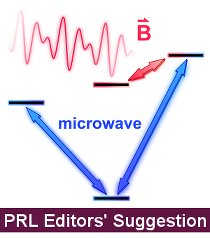
Ultrasensitive Single Atom Magnetometer
06/16/2016
Precision sensing, and in particular high precision magnetometry, is a central goal of research into quantum technologies. For magnetometers, often trade-offs exist between sensitivity, spatial resolution, and frequency range. In a collaboration with theorists from Huazhong University of Science and Technology (China), The Hebrew University of Jerusalem (Israel) and University of Ulm, we adapted a dynamical decoupling scheme that improves phase coherence by orders of magnitude and merged it with a magnetic sensing protocol. This allowed us to achieve a measurement sensitivity close to the standard quantum limit, even for high frequency fields. Using a single atomic ion as a sensor, we experimentally attain a sensitivity of 4.6 pT/√Hz for an alternating-current magnetic field near 14 MHz. This unprecedented sensitivity combined with spatial resolution in the nanometer range and tunability from direct current to the gigahertz range could be used for magnetic imaging in as of yet inaccessible parameter regimes.
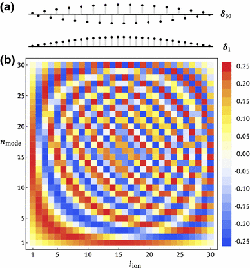
Isospaced linear ion strings
03/23/2016
We describe the statical and dynamical properties of ions stored in segmented electrodynamical Paul traps with a uniform ion separation. This specific ion arrangement is achieved by a smooth anharmonic effective potential generated by suitable voltages applied to segmented dc electrodes or by appropriate electrode shaping. We find analytic expressions for the required field, potential and normal mode matrix and find that even finite systems closely reproduce the critical radial binding strength of an infinite size system at the transition from linear to zigzag configuration. From the normal mode matrix, we find that such strings exhibit a solid-state-like band of normal modes and determine the effective spin–spin coupling when the ion string is exposed to a magnetic gradient. We show how the potential, modes and couplings can be altered while still maintaining a homogeneous spacing and present numerical examples, for how this potential can be achieved in either segmented Paul traps or by using an optimized electrode geometry.
- Isospaced Ion Strings, M. Johanning, Applied Physics B 122:71 (2016)
